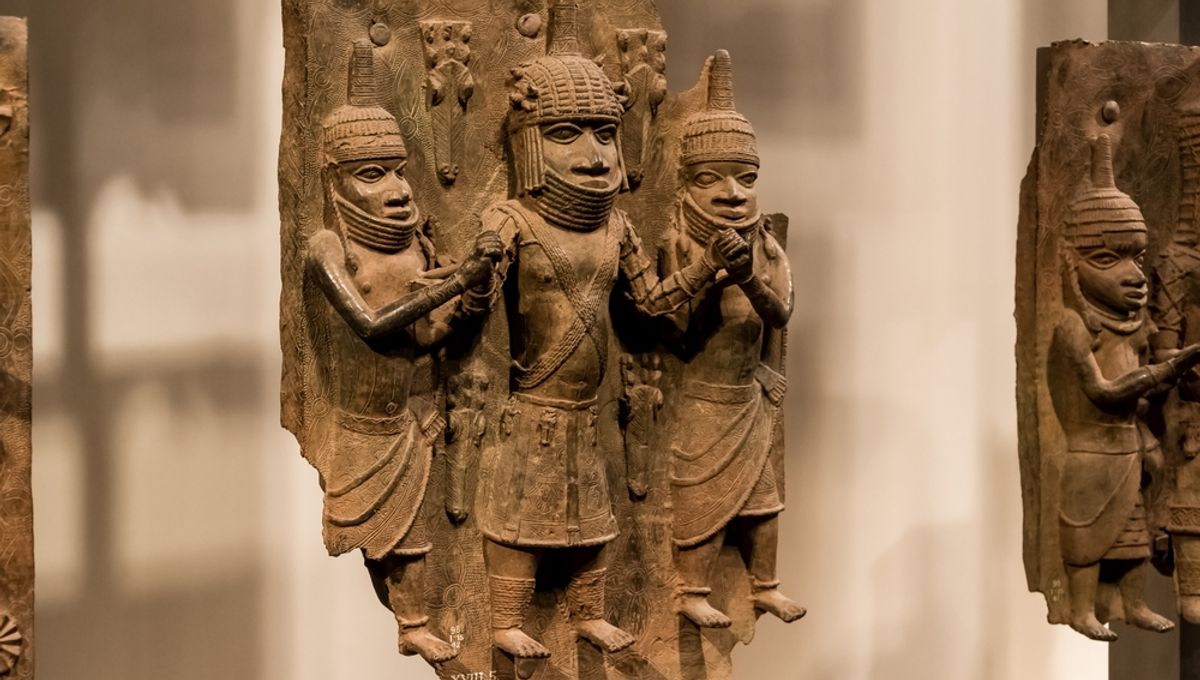
Among the most controversial artifacts housed in British and American museums, the Benin Bronzes are a collection of thousands of African artworks created by Nigerian Edo metalsmiths between the 16th and 19th centuries. As arguments over the priceless relics’ repatriation continue, researchers have finally discovered the source of the metal from which the pieces were forged.
For many years, scholars have suspected that the Benin Bronzes may have been created by melting down brass rings called manillas, which were shipped to West Africa in huge numbers with the opening of Portuguese trade in the 15th century. Lacking any apparent function in European societies, these manillas were produced exclusively for use as currency in Africa, and historical sources indicate that local merchants were highly selective about which rings they accepted.
However, according to the authors of a new paper, “previous studies comparing available manillas to the Benin material yielded no evidence to support a connection between the European trade brass and the Benin works.” Re-addressing the issue, the researchers performed isotopic analyses on 67 manillas recovered from five shipwrecks in Europe and Africa, as well as three terrestrial sites.
Reporting their findings, the authors explain that “the lead isotope ratios of early manillas from 16th-17th century shipwrecks share stronger similarities with those of the Benin Bronzes than those of later manillas.” This is important since the source of brass for the manufacture of manillas is likely to have shifted in the 18th century when British mines gained control of the industry.
According to the researchers, the metal in manillas sourced from the UK does not match that of the Benin Bronzes, which may explain why previous studies have failed to establish a link between European brass rings and the Edo sculptures. Chemical analysis of the earlier manillas, however, revealed that these rings “match well isotopically with the lead-zinc ores of the German Rhineland making it likely that they were produced by the well-established brass industry of that particular region.”
In other words, the Benin Bronzes were probably made from early manillas that were produced using German brass, but not from later manillas containing British brass.
“This study definitively identifies the Rhineland as the principal source of manillas at the opening of the Portuguese trade,” conclude the authors. “Millions of these artifacts were sent to West Africa where they likely provided the major, virtually the only, source of brass for West African casters between the 15th and the 18th centuries, including serving as the principal metal source of the Benin Bronzes.”
Placed in the Royal Palace of the Kingdom of Benin, many of these metal artworks were later looted by the members of a British expedition in 1897. Though some have since been returned, others remain in museums around the world.
Summing up the significance of this research, study author Tobias Skowronek explained in a statement that “the Benin Bronzes are the most famous ancient works of art in all West Africa. Where their brass came from has long been a mystery.”
“Finally, we can prove the totally unexpected: the brass used for the Benin masterpieces, long thought to come from Britain or Flanders, was mined in western Germany. The Rhineland manillas were then shipped more than 6,300 kilometers [3,915 miles] to Benin.”
The study is published in the journal PLoS ONE.
Source Link: The Famous Benin Bronzes Were Forged From German Brass